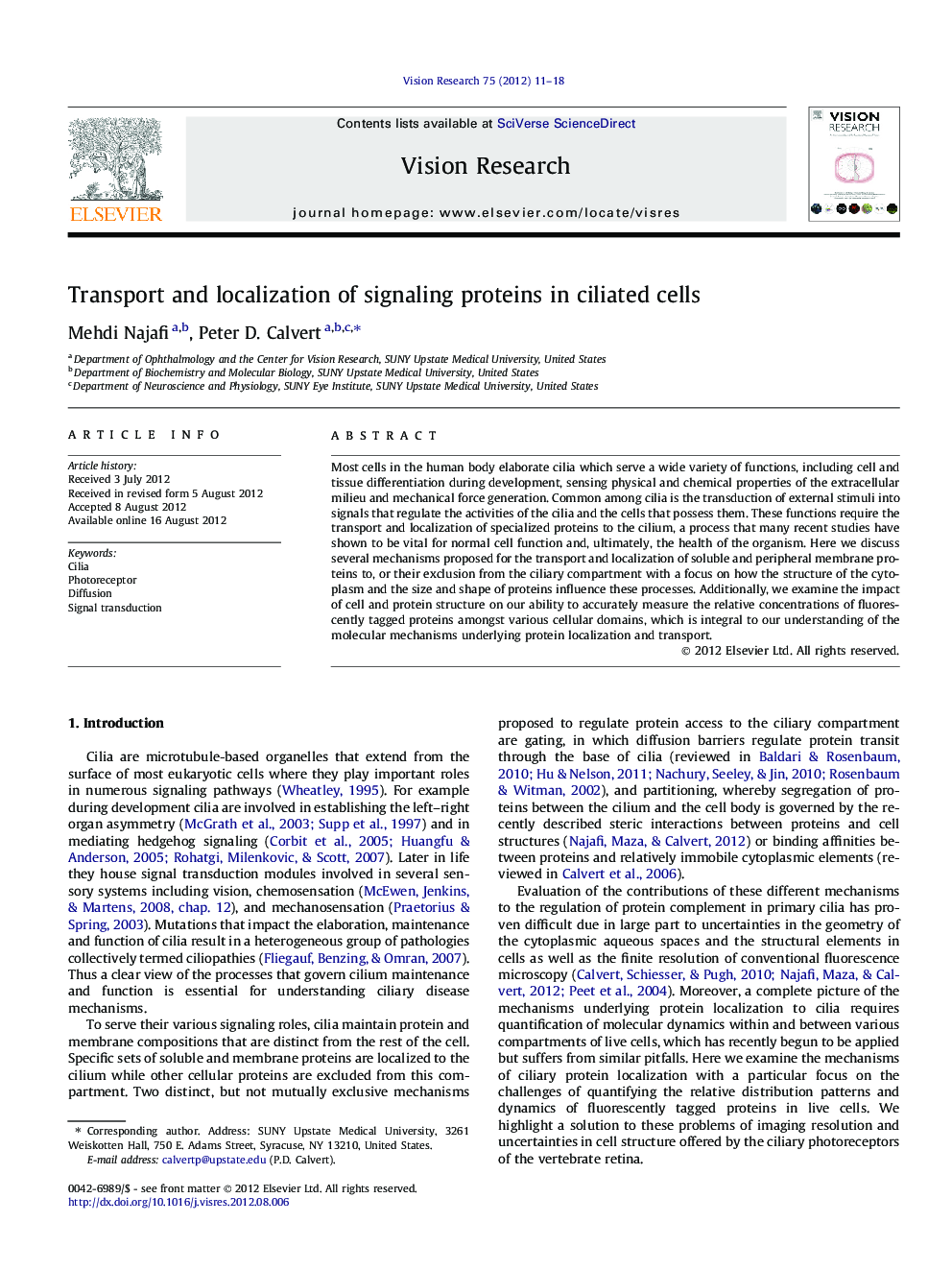| Article ID | Journal | Published Year | Pages | File Type |
|---|---|---|---|---|
| 4033864 | Vision Research | 2012 | 8 Pages |
Most cells in the human body elaborate cilia which serve a wide variety of functions, including cell and tissue differentiation during development, sensing physical and chemical properties of the extracellular milieu and mechanical force generation. Common among cilia is the transduction of external stimuli into signals that regulate the activities of the cilia and the cells that possess them. These functions require the transport and localization of specialized proteins to the cilium, a process that many recent studies have shown to be vital for normal cell function and, ultimately, the health of the organism. Here we discuss several mechanisms proposed for the transport and localization of soluble and peripheral membrane proteins to, or their exclusion from the ciliary compartment with a focus on how the structure of the cytoplasm and the size and shape of proteins influence these processes. Additionally, we examine the impact of cell and protein structure on our ability to accurately measure the relative concentrations of fluorescently tagged proteins amongst various cellular domains, which is integral to our understanding of the molecular mechanisms underlying protein localization and transport.
► Brief review of signaling protein transport and localization within ciliated cells. ► Focus on the mechanisms of protein retention within, or exclusion from cilia. ► Impact of steric volume exclusion on cell signaling protein distributions. ► Resolution limit of fluorescent imaging and interpretation of protein distribution.
